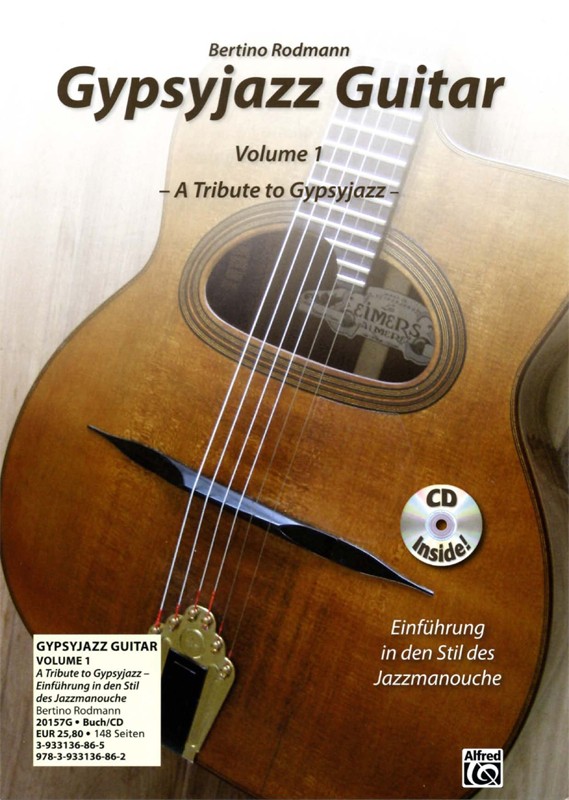JM-Arpeggios

JM-Arpeggios – In this lesson-article-series we speak about common JM-Arpeggios and how to use and play them on the guitar.
An arpeggio (Pl.: arpeggios) is the musical name for a chord where all notes aren´t played all together at once, but after one another in short spaces, to again build a kind of “melody”. An Arpeggio is also known as a „broken chord“.
The word arpeggio is derived from “arpa” (ital. for harp) and in the sense of the word means that a chord should be played “harp-like”, as it would be played on a harp = note-by-note.
One of the first to intensively use arpeggios in his playing was guitar-maestro Django Reinhardt.

Due to his injuries of the left hand, he soon found out that arpeggios were a great way for him to easily play many fast notes in short time. Thats why he used arpeggios as one main feature in his improvisations. Many other JazzManouche- and Jazz-guitarrists copied that, thus introducing this technique into the modern Jazzplaying until today.
In our article-series about arpeggios we will show lessons on major and minor-arpeggios, as well as special arpeggios such as minor6-, minor7- or other types of arpeggios.
Minor-Arpeggios
Minor6-Arpeggios
Minor7-Arpeggios
Major-Arpeggios
Major6-Arpeggios
Major7-Arpeggios
You prefer to have all that information in one handy little eBook? No Problem.
In our JM-Arpeggio-Book we listed 30+ Arpeggios with many hints of practical use.
Get your copy of this eBook to have the most comprehensive introduction into the world of Arpeggios for only 24,90€.

Share this article:
ADVERTISING
 “Gypsyjazz Guitar – a tribute to Gypsyjazz“
“Gypsyjazz Guitar – a tribute to Gypsyjazz“
Gypsy-Jazz bzw. Jazz-Manouche ist der erste in Europa entstandene Jazzstil.
Seine Einflüsse kommen aus dem französischen Musette-Walzer, dem ungarischen Çsardas oder dem spanischen Flamenco, sowie der Sinti-Musik selbst, die von den Sinti-Musikern in Swing-Phrasierung interpretiert wurde.
Ziel des Buches: Nicht nur eine umfassende Gitarrenschule für Gypsy-Jazz Gitarre zu verfassen, die die rhythmischen und solistischen Aspekte der Gypsyjazz Gitarren-Spielweise vermittelt, sondern auch den Respekt gegenüber der uralten Tradition der Sinti.
Inhalt Teil 1: Rhythm Guitar: Comping, La Pompe-Rhythmus, Dead Notes, Gypsychords, Voicings, Blues-Kadenz, Chord Substitution
Inhalt Teil 2: Solo Guitar: Reststroke Picking, Arpeggio Picking, Sweptstroke Picking, Skalen, Arpeggien, Solo Licks
Verlag: Alfred Music Publishing GmbH; Auflage: 1 (15. Oktober 2011)
Sprachen: Deutsch / English ISBN-10: 3933136865 – ISBN-13: 978-3933136862
148 Seiten, mit Play-alongs und Noten & Tabulatur + Audio-CD Preis: 25,80
Erhältlich bei Amazon, Alfred Verlag oder www.bertino-guitarrist.com
